 As we saw in Part 1, households are seeing a rise in the cost of living, which is set to accelerate. Inflation in the year to January 2022, as measured by the Consumer Prices Index (CPI), was 5.5%, the highest rate for over 30 years, and it is expected to reach more than 7 per cent by April. This has put great pressure on household budgets, with wage rises for most people being below the rate of price inflation. The poor especially have been hard hit, with many struggling to meet soaring energy, food and transport prices and higher rents.
As we saw in Part 1, households are seeing a rise in the cost of living, which is set to accelerate. Inflation in the year to January 2022, as measured by the Consumer Prices Index (CPI), was 5.5%, the highest rate for over 30 years, and it is expected to reach more than 7 per cent by April. This has put great pressure on household budgets, with wage rises for most people being below the rate of price inflation. The poor especially have been hard hit, with many struggling to meet soaring energy, food and transport prices and higher rents.
In Part 2 we look at the UK government’s response to the situation, a similar response to that in many other countries.
Effects on government finances
 The Chancellor, Rishi Sunak, has stated that the government understands the pressures families are facing with the cost of living. However, rising interest rates mean that it will cost the Treasury considerably more to service the UK’s national debt of more than £2tn.
The Chancellor, Rishi Sunak, has stated that the government understands the pressures families are facing with the cost of living. However, rising interest rates mean that it will cost the Treasury considerably more to service the UK’s national debt of more than £2tn.
Interest payments on index-linked debt are calculated using an alternative measure of inflation, the retail prices index (RPI), which is running at 7.8%, considerably higher than anticipated in last October’s Budget. It is now projected that central government spending on debt interest this financial year will come in at around £69bn, some £11bn higher than the £58bn forecast in the October 2021 Budget and £27bn above the £42bn forecast in the March 2021 Budget.
In addition, it is expected that the latest rise in CPI will increase the chances of the Bank of England raising interest rates and thereby further increasing the costs of servicing national debt. If this is the outcome when its Monetary Policy Committee meets next month, then it would be the third successive time interest rates have been raised.
There is also concern that this, in addition to the direct effects of higher costs, will push more firms towards insolvency. It is argued that if government wanted to prevent this, it would need to cut business taxes in order to boost investment and productivity and to allow businesses to provide annual wage rises that are affordable.
Monetary policy
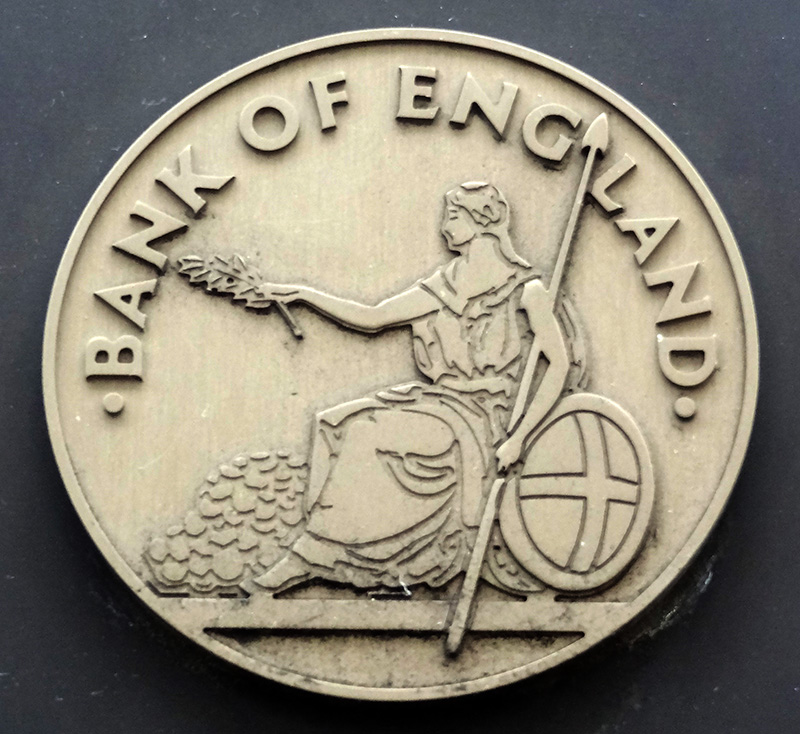 The Bank of England’s traditional response to rising inflation is to raise interest rates, which it has done this twice in the past few months. This means that people who have borrowed money could see their monthly payments go up, especially on mortgages tied to Bank Rate.
The Bank of England’s traditional response to rising inflation is to raise interest rates, which it has done this twice in the past few months. This means that people who have borrowed money could see their monthly payments go up, especially on mortgages tied to Bank Rate.
An aim of this policy is to make borrowing more expensive resulting in people spending less. As a result, they will buy fewer things, and prices will stop rising as fast. However, when inflation is caused by external forces, this might have a limited effect on prices and would put a further squeeze on household budgets.
Fiscal policy
Alternatively, the government might choose to cut taxes for consumers on items whose prices are rising quickly. It is taking some measures to reduce the impact of energy price rises. For example, the Treasury has announced that it would provide millions of households with up to £350 to help with their rising energy bills and in April the lowest-paid will see the National Living Wage rise by 6.6%, which is higher than the current inflation rate.
The chief economist of the British Chambers of Commerce has said that tightening monetary policy too quickly risks undermining confidence and the wider recovery, arguing that more needs to be done to limit the unprecedented rise in costs facing businesses, including financial support for those struggling with soaring energy bills and delaying April’s national insurance rise.
Conclusion
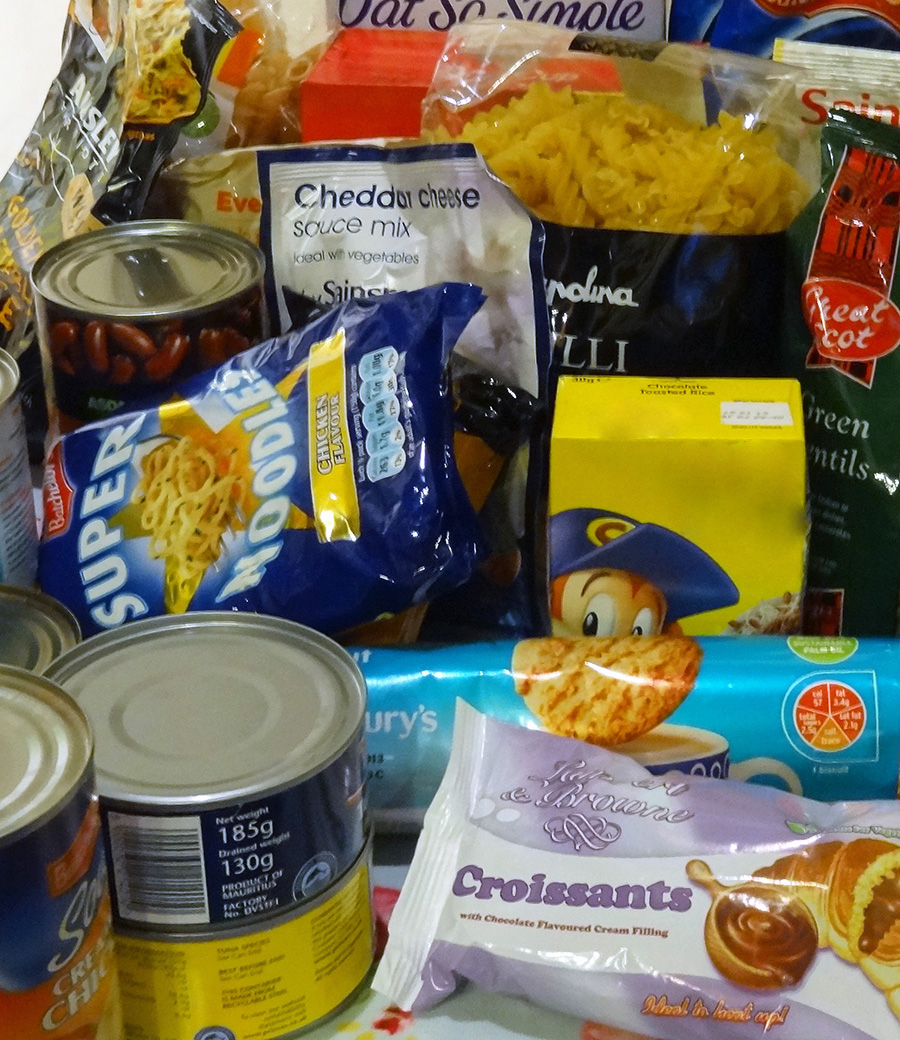 Rising inflation affects all our living standards. It a global issue with causes beyond government control.
Rising inflation affects all our living standards. It a global issue with causes beyond government control.
Rising prices together with planned tax increases mean that real average take-home pay is likely to fall over the coming year. The extra energy costs and tax rises will force families to make savings elsewhere, meaning business revenues may fall, and the economic recovery could be negatively impacted.
However, it is those on low incomes that tend to find it hardest to cope with the rising cost of living. Those impacted the most will be faced with difficult decisions over the coming months as they try to cope with falling real incomes. With food price inflation expected to rise further, a likely rise in interest rates and a further increase in the energy price cap in October, these tough decisions are set to get harder for poorest households in the economy.
Articles
See articles in Part 1
Podcast
Questions
These questions are based on the podcast.
- What elements are there in household energy prices? Which element has gone up most?
- What are the arguments for and against the government delaying the rise in the rate of national insurance by 1.25 percentage points?
- What can be done to help people on modest earnings who earn just too much to receive benefits?
- Are government loans to help people with higher bills a good idea?
- What are the advantages and disadvantages of removing VAT on domestic energy?
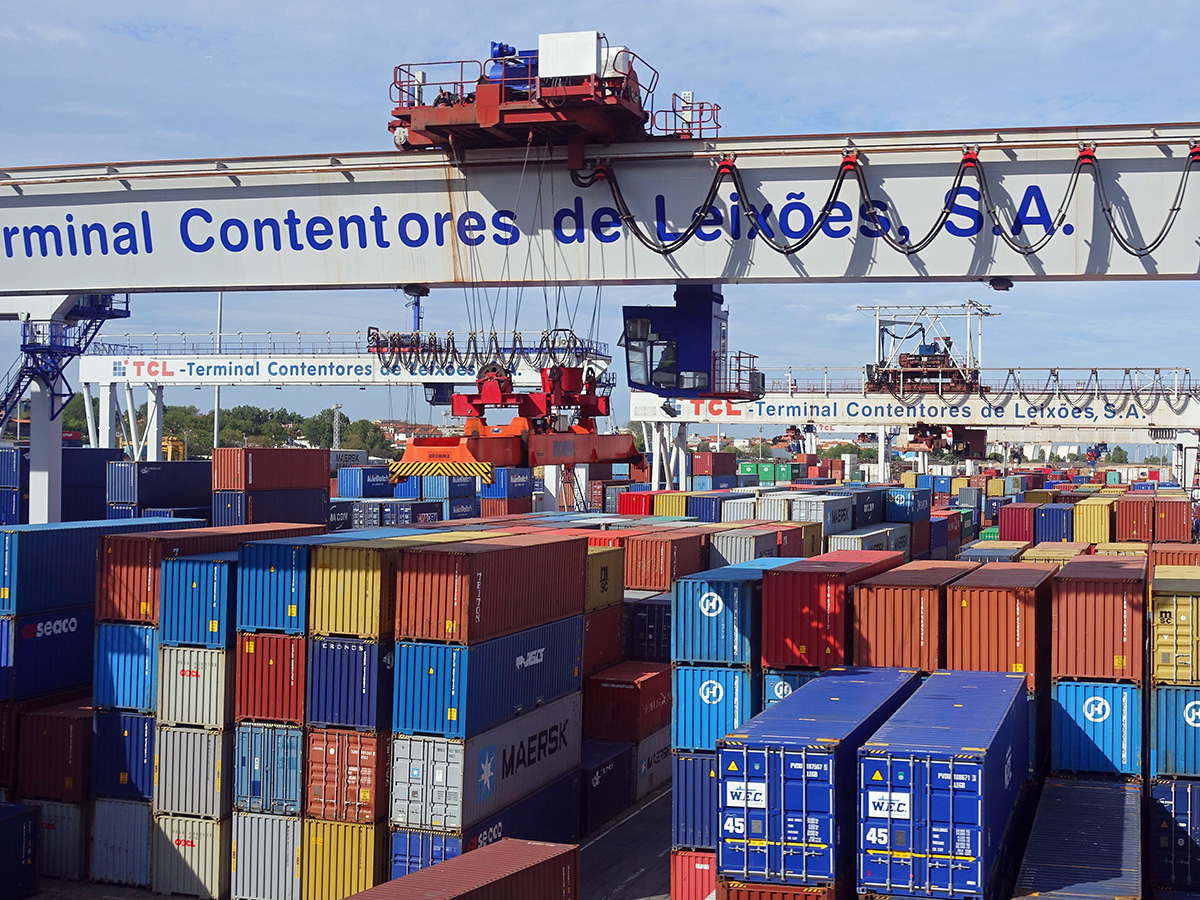 According to the Brexit trade agreement (the Trade and Cooperation Agreement (TCA)), trade between the EU and the UK will remain quota and tariff free. ‘Quota free’ means that trade will not be restricted in quantity by the authorities on either side. ‘Tariff free’ means that customs duties will not be collected by the UK authorities on imports from the EU nor by the EU authorities on imports from the UK.
According to the Brexit trade agreement (the Trade and Cooperation Agreement (TCA)), trade between the EU and the UK will remain quota and tariff free. ‘Quota free’ means that trade will not be restricted in quantity by the authorities on either side. ‘Tariff free’ means that customs duties will not be collected by the UK authorities on imports from the EU nor by the EU authorities on imports from the UK.
Article ‘GOODS .5: Prohibition of customs duties’ on page 20 of the agreement states that:
Except as otherwise provided for in this Agreement, customs duties on all goods originating in the other Party shall be prohibited.
This free-trade agreement was taken by many people to mean that trade would be unhindered, with no duties being payable. In fact, as many importers and exporters are finding, trade is not as ‘free’ as it was before January 2021. There are four sources of ‘friction’.
Tariffs on goods finished in the UK
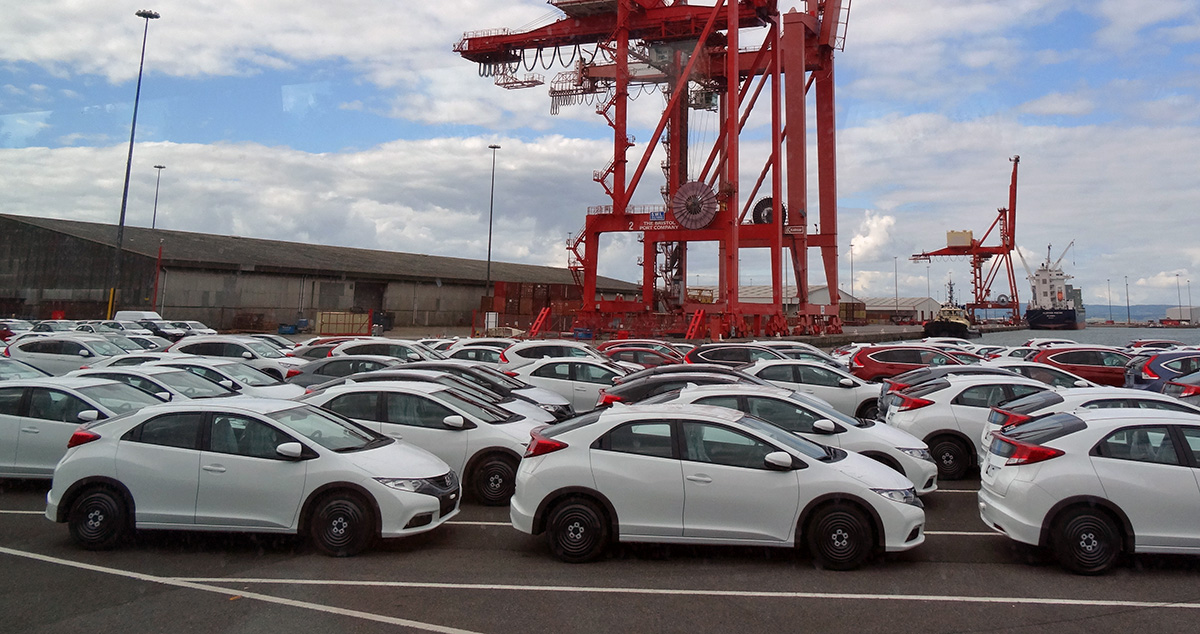 This has become a major area of concern for many UK companies. When a good is imported into the UK from outside the EU and then has value added to it by processing, packaging, cleaning, remixing, preserving, refashioning, etc., under ‘rules of origin’ regulations, it can only count as a UK good if sufficient value or weight is added. The proportions vary by product, but generally goods must have approximately 50% UK content (or 80% of the weight of foodstuffs) to qualify for tariff-free access to the EU. For example, for a petrol car, 55% of its value must have been created in either the EU or UK. Thus cars manufactured in the UK which use many parts imported from Japan, China or elsewhere, may not qualify for tariff-free access to the EU.
This has become a major area of concern for many UK companies. When a good is imported into the UK from outside the EU and then has value added to it by processing, packaging, cleaning, remixing, preserving, refashioning, etc., under ‘rules of origin’ regulations, it can only count as a UK good if sufficient value or weight is added. The proportions vary by product, but generally goods must have approximately 50% UK content (or 80% of the weight of foodstuffs) to qualify for tariff-free access to the EU. For example, for a petrol car, 55% of its value must have been created in either the EU or UK. Thus cars manufactured in the UK which use many parts imported from Japan, China or elsewhere, may not qualify for tariff-free access to the EU.
In other cases, it is simply the question of whether the processing is deemed ‘sufficient’, rather than the imported inputs having a specific weight or value. For example, the grinding of pepper is regarded as a sufficient process and thus ground pepper can be exported from the UK to the EU tariff free. Another example is that of coal briquettes:
The process to transform coal into briquettes (including applying intense pressure) goes beyond the processes listed in ‘insufficient processing’ and so the briquettes can be considered ‘UK originating’ regardless of the originating status of the coal used to produce the briquettes.
In the case of many garments produced in the UK and then sold in retail chains, many of which have branches in both the UK and EU, generally both the weaving and cutting of fabric to make garments, as well as the sewing, must take place in the UK/EU for the garments to be tariff free when exported from the UK to the EU and vice versa.
Precise details of rules of origin are given in the document, The Trade and Cooperation Agreement (TCA): detailed guidance on the rules of origin.
Many UK firms exporting to the EU and EU firms exporting to the UK are finding that their products are now subject to tariffs because of insufficient processing being done in the UK/EU. Indeed, with complex international supply chains, this is a major problem for many importing and exporting companies.
Documentation
Rules of origin require that firms provide documentation itemising what parts of their goods come from outside the UK/EU. Then it has to be determined whether tariffs will be necessary on the finished product. This is time consuming and is an example of the increase in ‘red tape’ about which many firms are complaining. As the Evening Standard article states:
Exporters have to be able to provide evidence to prove the origin of their products’ ingredients. Next year, they will also have to provide suppliers’ declarations too, and EU officials may demand those retrospectively, so exporters need to have them now.
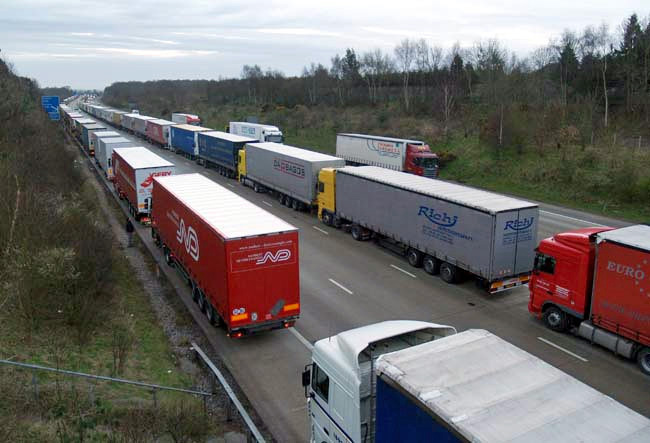 The increased paperwork and checks add to the costs of trade. Some EU companies are stating that they will no longer export to the UK and some UK companies that they will no longer export to the EU, or will have to set up manufacturing plants or distribution hubs in the EU to handle trade within the EU.
The increased paperwork and checks add to the costs of trade. Some EU companies are stating that they will no longer export to the UK and some UK companies that they will no longer export to the EU, or will have to set up manufacturing plants or distribution hubs in the EU to handle trade within the EU.
Other companies are adding charges to their products to cover the costs. As the Guardian article states:
“We bought a €47 [£42] shelf from Next for our bathroom,” said Thom Basely, who lives in Marseille. “On the morning it was supposed to be delivered we received an ‘import duty/tax’ demand for over €30, like a ransom note. It came as a complete surprise.”
In evidence given to the Treasury Select Committee (Q640) in May 2018, Sir Jon Thompson, then Chief Executive of HMRC, predicted that leaving the single market would involve approximately 200 million extra customs declarations on each side of the UK/EU border at a cost of £32.50 for each one, giving a total extra cost of approximately £6.5bn on each side of the border for companies trading with Europe. Although this was only an estimate, the extra ‘paperwork’ will represent a substantial cost.
VAT
Previously, goods could be imported into the UK without paying VAT in the UK on value added up to that point as VAT had already been collected in the EU. Similarly, goods exported to the EU would already have had VAT paid and hence would only be subject to the tax on additional value added. The UK was part of the EU VAT system and did not have to register for VAT in each EU country.
Now, VAT has to be paid on the goods as they are imported or released from a customs warehouse – similar to a customs duty. This is therefore likely to involve additional administration costs – the same as those with non-EU imports.
Services
The UK is a major exporter of services, including legal, financial, accounting, IT and engineering. It has a positive trade in services balance with the EU, unlike its negative trade in goods balance. Yet, the Brexit deal does not include free trade in services. Some of the barriers to other non-EU countries have been reduced for the UK in the TCA, but UK service providers will still face new barriers which will impose costs. For example, some EU countries will limit the time that businesspeople providing services can stay in their countries to six months in any twelve. Some will not recognise UK qualifications, unlike when the UK was a member of the single market.
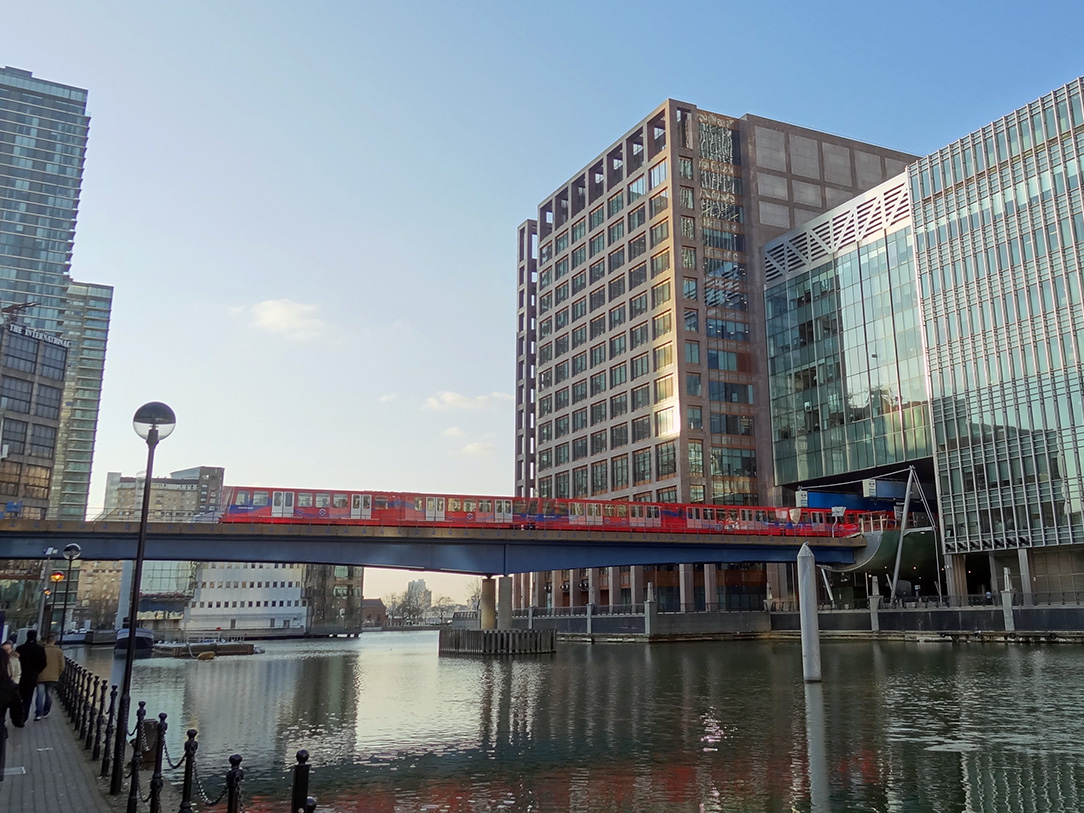 The financial services supplied by City of London firms are a major source of export revenue, with about 40% of these revenues coming from the EU. Now outside the single market, these firms have lost their ‘passporting rights’. These allowed such firms to sell their services into the EU without the need for additional regulatory clearance. The alternative now is for such firms to be granted ‘equivalence’ by the EU. This has not yet been negotiated and even if it were, does not cover the full range of financial services. It excludes, for example, banking services such as lending and deposit taking.
The financial services supplied by City of London firms are a major source of export revenue, with about 40% of these revenues coming from the EU. Now outside the single market, these firms have lost their ‘passporting rights’. These allowed such firms to sell their services into the EU without the need for additional regulatory clearance. The alternative now is for such firms to be granted ‘equivalence’ by the EU. This has not yet been negotiated and even if it were, does not cover the full range of financial services. It excludes, for example, banking services such as lending and deposit taking.
Conclusions
Leaving the single market has introduced a range of frictions in trade. These are causing severe problems to some importers and exporters in the short term. Some EU goods are now unavailable in the UK or only so at significantly higher prices. Some exporters are finding that the frictions are too great to make their exports profitable. However, it remains to be seen how quickly accounting and logistical systems can adjust to improve trade flows between the UK and the EU.
But some of these frictions, as itemised above, will remain. According to the law of comparative advantage, these restrictions on trade will lead to a loss of GDP. And these losses will not be spread evenly throughout the UK economy: firms and their employees which rely heavily on UK–EU trade will be particularly hard hit.
Articles
- EU firms refuse UK deliveries over Brexit tax changes
BBC News, Robert Plummer (5/1/21)
- Brexit trade problems: what’s gone wrong and can it be fixed?
The Conversation, Billy Melo Araujo (14/1/21)
- Brexit: parcels of grief
Turbulent Times, Richard North (8/1/21)
- UK retailers stumped by post-Brexit trade deal with EU
Financial Times, Jonathan Eley and Daniel Thomas (7/1/21)
- Pan-EU food supply chains hit by Brexit trade deal
Financial Times, Peter Foster, Arthur Beesley and Sam Fleming (6/1/21)
- Customers in Europe hit by post-Brexit charges when buying from UK
The Guardian, Jon Henley (7/1/21)
- UK importers brace for ‘disaster’ as new Brexit customs checks loom
The Guardian, Joanna Partridge (7/2/21)
- Brexit: The reality dawns
BBC News, Scotland, Douglas Fraser (8/1/21)
- Post-Brexit customs systems not fit for purpose, say meat exporters
BBC News, Simon Jack (15/1/21)
- Brexit: How much disruption has there been so far?
BBC News, Reality Check team (1/2/21)
- Baffling Brexit rules threaten export chaos, Gove is warned
The Observer, Toby Helm (10/1/21)
- Shock Brexit charges are hurting us, say small British businesses
The Observer, Toby Helm and Michael Savage (17/1/21)
- ‘A Brexit nightmare’: the British businesses being pushed to breaking point
The Observer, Toby Helm (24/1/21)
- Debenhams closes online business in Ireland as 50 major UK retailers face EU tariffs
ITV News, Joel Hills (7/1/21)
- The Brexit deal is being celebrated as though it removes all tariffs. It doesn’t
Prospect, Sam Lowe (8/1/21)
- As Marks and Spencer warns of Brexit nightmare, what are these Rules of Origin red tape issues?
Evening Standard, Jim Armitage (9/1/21)
- UK VAT after the transitional period
The Institute of Chartered Accountants in England and Wales (31/12/20)
- The Brexit deal and the services sector
UK in a Changing Europe, Sarah Hall (28/12/20)
- What does the Brexit trade deal mean for financial services?
UK in a Changing Europe, Sarah Hall (27/12/20)
Official documents
Questions
- Explain what is meant by ‘rules of origin’.
- If something is imported to the UK from outside the UK and then is refashioned in the UK and exported to the EU but, according to the rules of origin has insufficient value added in the UK, does this mean that such as good will be subject to tariffs twice? Explain.
- Are tariffs exactly the same as customs duties? Is the distinction made in the Guardian article a correct one?
- Is it in the nature of a free-trade deal that it is not the same as a single-market arrangement?
- Find out what arrangement Switzerland has with the EU. How does it differ from the UK/EU trade deal?
- What are the advantages and disadvantages of the Swiss/EU agreement over the UK/EU one?
- Are the frictions in UK–EU trade likely to diminish over time? Explain.
- Find out what barriers to trade in services now exist between the UK and EU. How damaging are they to UK services exports?
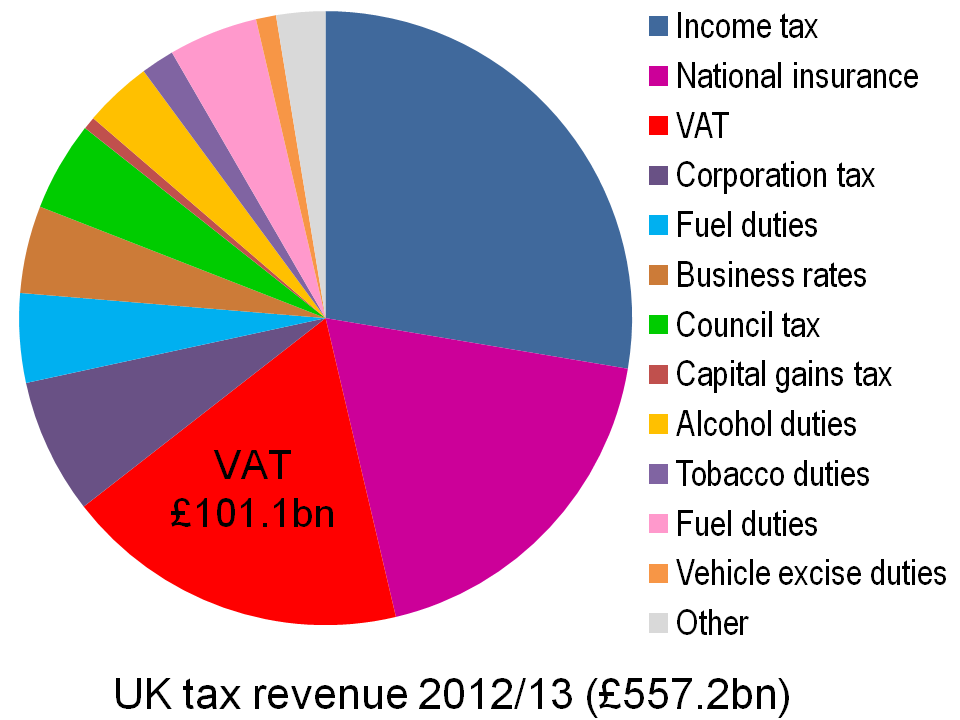 VAT was introduced on the 1st of April 1973, as part of the conditions for the UK entering the Common Market. Designed by a French tax expert, Maurice Lauré, it was initially envisaged as a straightforward replacement for purchase tax, which would be applied to most goods and services.
VAT was introduced on the 1st of April 1973, as part of the conditions for the UK entering the Common Market. Designed by a French tax expert, Maurice Lauré, it was initially envisaged as a straightforward replacement for purchase tax, which would be applied to most goods and services.
Forty years on, VAT is increasingly complex, with numerous exemptions, many anomalies in its scope, and increasingly expensive challenges to its imposition. How did we get to this point? And is it time for VAT to undergo a mid-life makeover?
All governments have to raise taxes – to redistribute income and to fund public spending. They have a number of mechanisms they can use, but essentially they have to tax incomes (direct taxes), spending (indirect taxes) or a mix of both. The main indirect tax in the UK is VAT, which now raises over £100bn a year, compared with £1.5bn in its first year (see above chart: click here for a PowerPoint version). Initially envisaged as a simple, cross-Europe purchase tax, the current system is complex and at times appears to have been formulated ‘on the hoof’, never a good way to build a tax system.
In the 2012 Budget, the Chancellor decided to apply the standard rate of income tax to hot takeaway pasties; previously they had been zero-rated. However, he had sharply underestimated the ability of the industry to lobby against the tax, working closely with the tabloid press. Perhaps more importantly, he also missed the complex nature of the good; when is a hot pasty just cooling down? And what is hot? The government backtracked and now 20% VAT is only charged on pasties that are deliberately kept hot. You might think that this change of heart avoided introducing an anomaly, but consider how you might feel if you sell takeaway baked potatoes, which are subject to VAT.
Apart from the complexity of the system, VAT is unpopular with some commentators who feel that it falls too heavily on low-income households. Although many foodstuffs are zero-rated and housing is exempt, VAT is charged at 20% on clothing and many necessities such as cleaning materials. Gas and electricity are subject to a reduced rate of 5% and both alcohol and cigarettes have additonal excise duties imposed and yet are disproportionally consumed by the poor. When the standard rate of VAT was temporarily dropped to 15% in 2010, but then permanently raised to 20% in 2011, many felt that this was a shift in the tax burden to the poor.
So complex, irrational and prone to changes following political lobbying or expensive legal cases, VAT does seem to be stumbling into its forties under something of a cloud. However, it remains the case that it raises a large proportion of UK tax revenues at relatively low direct cost and provides the Chancellor with a reasonably effective fiscal policy tool. Even if a government wanted to put in place an alternative, it is likely that the associated political risks would be too high for it to do so. We might hope for some rationalisation of the current system, but there is little doubt that we will be raising a glass to VAT’s 50th birthday in 2023.
The links below include some articles on VAT’s 40th birthday and some more general articles on VAT.
Articles
VAT is 40 years old- and now has middle-age spread The Guardian, Juliette Garside (31/1/13)
Is VAT suffering a mid-life crisis at 40? BBC News, Colin Corder (31/3/13)
VAT at 40, not simple, not popular, but central to government revenue-raising The Chartered Institute of Taxation (28/3/13)
Happy birthday VAT, here’s how not to pay you The Telegraph, Rosie Murray-West (31/3/13)
Poorest spend higher proportion of VAT than richest BBC News (31/10/11)
A Value- Added Tax offers much to love- and hate New York Times, Gregory Mankiw (1/5/10)
EC Standard VAT Declaration European Commission Roadmap (2012)
Data and information
VAT pages HMRC
Public sector finance statistics HM Treasury (follow link to latest Public finances databank (Excel file) and go to Worksheet C2)
Latest European Union EU VAT rates VATLive
Questions
- Explain why VAT might be deemed regressive. Can you formulate an argument that it falls more heavily on the rich than the poor?
- Why is VAT administratively cheap? Other than generating tax revenues, can you think of any advantages of the tax?
- Newspapers and books are zero-rated in the UK, while e-books and news apps are standard rated at 20%. Can you identify some other anomalies in the UK VAT system? Is there an argument that a better approach would be to charge a lower rate on all goods and services?
- Who pays VAT, consumers or producers? Illustrate your answer with a diagram, or two.
- A business has to register for VAT once it has a turnover of £77,000 pa. Does this system give rise to any perverse incentives?
- Countries across the European Union have varying VAT rates, applied to very different ranges of products. Explain why this might hinder the workings of a single European market.
- Imagine you were running a brand new economy; would you use a value-added tax to raise revenues? What are the alternatives open to governments?
 Petrol prices have been a bone of contention for some time. With household incomes remaining low and the cost of living rising, the fact that average petrol prices have reached their highest level of more than 1.37p per litre on average will undoubtedly put growing pressure on the approaching budget.
Petrol prices have been a bone of contention for some time. With household incomes remaining low and the cost of living rising, the fact that average petrol prices have reached their highest level of more than 1.37p per litre on average will undoubtedly put growing pressure on the approaching budget.
There have already been calls for the Chancellor to reduce fuel duty and with this latest data, the pressure will only mount. The problem is, if fuel duty does fall, so will tax revenues and as one of the Coalition’s key objectives has been to cut the budget deficit, this could pose further problems. Even the calls to cut VAT on fuel will also put a dent in the budget deficit.
Although everyone is undoubtedly feeling the effects of these higher prices, the key thing with petrol is its elasticity of demand. Whether the price of petrol was 0.90p or 1.37p per litre, I continue to buy the same amount. Therefore, for me, the price elasticity of demand for petrol is highly inelastic – at least between those prices. After all, if the price increase above say £3 per litre, I might think twice about driving to work!
So what has been driving this increase in prices? Petrol prices are hugely dependent on the cost of oil and on the demand for any product that uses fuel. With growing demand from countries like India and China, as they continue to develop and grow very quickly; the continuing concerns with Iran’s nuclear programme and the political problems in the Middle East, oil prices have been forced up. The future trend in prices will depend on many factors, not least whether or not there is any change in fuel duty in the 2012 budget and whether something like a regulator is introduced to monitor increases in fuel prices. This is definitely an area to pay close attention to in the coming months.
Petrol prices reach record high Independent, Peter Woodman (3/3/12)
Petrol prices hit record high with further rises expected Guardian, Hilary Osborne (2/3/12)
Appeak to regulate petrol prices This is South Wales (3/3/12)
Plea to slash duty as fuel costs soar to record high Scotsman, Alastair Dalton (3/3/12)
Petrol prices hit record high The Telegraph, David Millward (2/3/12)
Diesel prices predicted to reach 150p as petrol hits new record Guardian, Terry Macalister and Hilary Osborne (2/3/12)
Questions
- Which are the factors on the demand side that have pushed up the price of oil and hence petrol and diesel?
- What are the supply-side factors that are causing the rising price of fuel?
- Use a demand and supply diagram to illustrate the effects you have explained in the first two questions.
- In the blog, I mention that my price elasticity of demand is relatively inelastic between 2 given prices. What does this suggest about the shape of my demand curve for petrol? How does this shape affect prices following any change in demand or supply?
- Why is petrol a relatively price inelastic product?
- There have been calls for the government to cut VAT or reduce fuel duty. What are the arguments for and against these policies?
- How effective do you think a petrol price regulator would be?
Growth in the UK for the final quarter of 2010 was originally at -0.5%. However, the latest data has revised that figure to -0.6% and not all of this was down to the snow. Analysts say that the snow effect is still believed to explain the 0.5% contraction, but the economy therefore declined by 0.1% because of other reasons and retailers have seen the effects. Primark has reported a ‘noticeable’ slowdown in demand since the beginning of 2011. With increasing VAT and rising cotton prices, clothing retailers are feeling the squeeze. The same is true of UK consumers. With an increase in VAT and high inflation, consumers’ purchasing power has simply fallen and so they are spending less. Despite this slowdown, Primark’s revenues are still significantly ahead of the same time last year.
The parent company, Associated British Foods (ABF) commented on the disappointing trading of 2011 so far, saying:
“Since the New Year, the performance in all our operations in Continental Europe has been very encouraging but there has been a noticeable slowing down of UK consumer demand.”
However, despite disappointing figures for Primark, UK retail sales did pick up in January, although analysts are warning against taking this information as a sign of recovery. As Hetal Mehta from Daiwa said:
“While we expected there to be some clawback from December’s dismal, snow-hit retail sales, today’s jump is a welcome surprise. But is still far too early to conclude that consumers are weathering the storm … and with the past week’s unemployment figures highlighting the fragility of the labour market, the housing market continuing to weaken and real earnings being hit hard by high inflation, it seems inconceivable that consumer spending will act as the driving force of the economy over the near term.”
There are many opinions about what to expect from the economy in 2011, but for any concrete information, we really have to wait for at least another month. Perhaps by Easter, we’ll have a better idea about the state of the UK. For now, there are a few articles considering the retail sector.
Primark owner warns of slowing sales in UK Guardian, Graeme Wearden (28/2/11)
Primark warns of ‘noticeable’ slowdown in UK demand BBC News (28/2/11)
Growth in UK retail sales slows sharply Wall Street Journal, Alex Brittain and Art Patnaude (24/2/11)
UK retail sales rebound: reaction Telegraph (28/2/11)
UK GDP figure revised down further BBC News (25/2/11)
Questions
- Why has higher VAT and cotton prices impacted retailers such as Primark?
- Why was Primark less affected by declining sales in the run up to Christmas?
- What do we mean by purchasing power?
- Why is it hard to draw any conclusions about the performance of the UK at the moment?
- What does a slowing down of retail sales mean for the UK’s recovery? Will it influence the Chancellor’s Budget?
 As we saw in Part 1, households are seeing a rise in the cost of living, which is set to accelerate. Inflation in the year to January 2022, as measured by the Consumer Prices Index (CPI), was 5.5%, the highest rate for over 30 years, and it is expected to reach more than 7 per cent by April. This has put great pressure on household budgets, with wage rises for most people being below the rate of price inflation. The poor especially have been hard hit, with many struggling to meet soaring energy, food and transport prices and higher rents.
As we saw in Part 1, households are seeing a rise in the cost of living, which is set to accelerate. Inflation in the year to January 2022, as measured by the Consumer Prices Index (CPI), was 5.5%, the highest rate for over 30 years, and it is expected to reach more than 7 per cent by April. This has put great pressure on household budgets, with wage rises for most people being below the rate of price inflation. The poor especially have been hard hit, with many struggling to meet soaring energy, food and transport prices and higher rents. The Chancellor, Rishi Sunak, has stated that the government understands the pressures families are facing with the cost of living. However, rising interest rates mean that it will cost the Treasury considerably more to service the UK’s national debt of more than £2tn.
The Chancellor, Rishi Sunak, has stated that the government understands the pressures families are facing with the cost of living. However, rising interest rates mean that it will cost the Treasury considerably more to service the UK’s national debt of more than £2tn. The Bank of England’s traditional response to rising inflation is to raise interest rates, which it has done this twice in the past few months. This means that people who have borrowed money could see their monthly payments go up, especially on mortgages tied to Bank Rate.
The Bank of England’s traditional response to rising inflation is to raise interest rates, which it has done this twice in the past few months. This means that people who have borrowed money could see their monthly payments go up, especially on mortgages tied to Bank Rate. Rising inflation affects all our living standards. It a global issue with causes beyond government control.
Rising inflation affects all our living standards. It a global issue with causes beyond government control.  What should the government do about rising energy prices?
What should the government do about rising energy prices? According to the Brexit trade agreement (the
According to the Brexit trade agreement (the  This has become a major area of concern for many UK companies. When a good is imported into the UK from outside the EU and then has value added to it by processing, packaging, cleaning, remixing, preserving, refashioning, etc., under ‘rules of origin’ regulations, it can only count as a UK good if sufficient value or weight is added. The proportions vary by product, but generally goods must have approximately 50% UK content (or 80% of the weight of foodstuffs) to qualify for tariff-free access to the EU. For example, for a petrol car, 55% of its value must have been created in either the EU or UK. Thus cars manufactured in the UK which use many parts imported from Japan, China or elsewhere, may not qualify for tariff-free access to the EU.
This has become a major area of concern for many UK companies. When a good is imported into the UK from outside the EU and then has value added to it by processing, packaging, cleaning, remixing, preserving, refashioning, etc., under ‘rules of origin’ regulations, it can only count as a UK good if sufficient value or weight is added. The proportions vary by product, but generally goods must have approximately 50% UK content (or 80% of the weight of foodstuffs) to qualify for tariff-free access to the EU. For example, for a petrol car, 55% of its value must have been created in either the EU or UK. Thus cars manufactured in the UK which use many parts imported from Japan, China or elsewhere, may not qualify for tariff-free access to the EU.  The increased paperwork and checks add to the costs of trade. Some EU companies are stating that they will no longer export to the UK and some UK companies that they will no longer export to the EU, or will have to set up manufacturing plants or distribution hubs in the EU to handle trade within the EU.
The increased paperwork and checks add to the costs of trade. Some EU companies are stating that they will no longer export to the UK and some UK companies that they will no longer export to the EU, or will have to set up manufacturing plants or distribution hubs in the EU to handle trade within the EU. The financial services supplied by City of London firms are a major source of export revenue, with about 40% of these revenues coming from the EU. Now outside the single market, these firms have lost their ‘passporting rights’. These allowed such firms to sell their services into the EU without the need for additional regulatory clearance. The alternative now is for such firms to be granted ‘equivalence’ by the EU. This has not yet been negotiated and even if it were, does not cover the full range of financial services. It excludes, for example, banking services such as lending and deposit taking.
The financial services supplied by City of London firms are a major source of export revenue, with about 40% of these revenues coming from the EU. Now outside the single market, these firms have lost their ‘passporting rights’. These allowed such firms to sell their services into the EU without the need for additional regulatory clearance. The alternative now is for such firms to be granted ‘equivalence’ by the EU. This has not yet been negotiated and even if it were, does not cover the full range of financial services. It excludes, for example, banking services such as lending and deposit taking.
